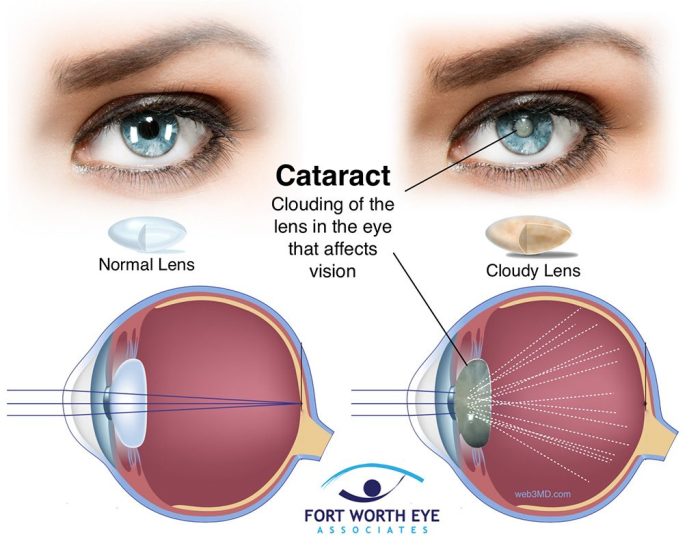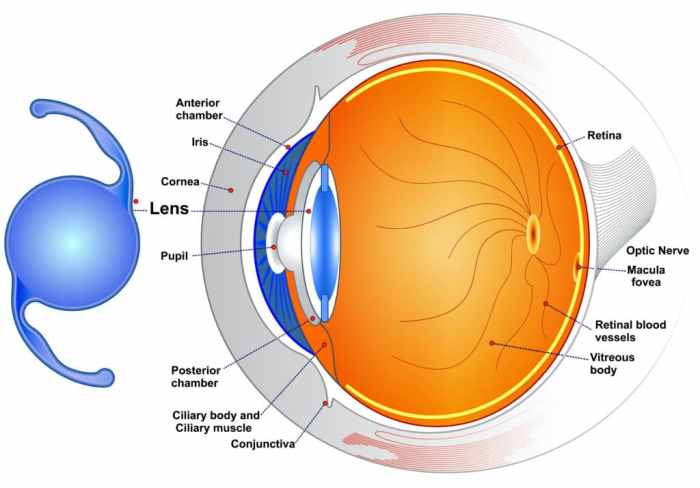Cataract surgery is a life-altering procedure, restoring clear vision for millions. However, the path to improved sight isn’t always straightforward. While many insurance plans cover the basic surgical procedure, the cost of premium lenses—offering enhanced vision beyond standard options—often falls squarely on the patient. This exploration delves into the financial realities of upgrading to premium lenses, examining the factors influencing their price, insurance coverage limitations, and available alternatives for patients seeking superior visual outcomes.
This discussion will navigate the complexities of choosing between standard and premium lenses, considering the long-term implications for vision and lifestyle. We’ll examine patient perspectives, financing options, and the crucial role of ophthalmologists in guiding informed decision-making. Ultimately, the goal is to equip individuals with the knowledge necessary to make confident choices regarding their vision and their finances.
Insurance Coverage for Cataract Surgery

Most insurance plans in the United States cover cataract surgery, but the extent of coverage varies significantly depending on the specific plan and the individual’s policy. Generally, standard coverage includes the medically necessary aspects of the procedure, aiming to restore clear vision. This typically encompasses the surgical fees, the removal of the cataractous lens, and the implantation of a basic intraocular lens (IOL). However, this standard IOL is usually a monofocal lens, correcting vision for distance only.
Standard insurance policies frequently exclude coverage for premium IOLs, which offer additional features beyond basic vision correction. This exclusion is based on the principle that these lenses are considered elective upgrades rather than medically necessary components of the surgery. The cost difference between a standard and a premium lens can be substantial, leading to significant out-of-pocket expenses for patients.
Reasons for Exclusion of Premium Lenses
Premium IOLs, such as multifocal, toric, or accommodating lenses, are designed to address specific vision needs beyond distance correction. They aim to reduce or eliminate the need for glasses after surgery, offering advantages like improved near vision, astigmatism correction, or a wider range of focus. Insurance companies often justify the exclusion of these lenses by arguing that they provide aesthetic or convenience benefits rather than medically necessary improvements. The enhanced visual acuity achieved with premium IOLs is seen as an upgrade, not a correction of a medical condition. Furthermore, the higher cost of these lenses contributes to their exclusion from standard coverage; insurance companies prioritize covering essential medical procedures before considering optional enhancements.
Limitations and Exclusions in Standard Policies
Standard insurance policies for cataract surgery often include specific limitations and exclusions related to upgrades and additional services. These can include:
Pre-authorization requirements: Many plans require pre-authorization for cataract surgery, including any planned upgrades. Failure to obtain this authorization can result in denied claims.
Coverage limitations on specific technologies: Even if a plan covers a portion of the cost of a premium lens, it might impose limitations on specific lens types or brands.
Co-pays and deductibles: Patients are typically responsible for co-pays, deductibles, and other cost-sharing arrangements, even for covered aspects of the surgery. These out-of-pocket costs can be significant, especially when combined with the cost of a premium lens.
Coverage for complications: While the surgery itself may be covered, additional procedures or treatments necessitated by complications might be subject to separate coverage rules and exclusions. This can lead to unexpected and substantial out-of-pocket expenses.
The Role of Ophthalmologists and Surgeons

Ophthalmologists play a crucial role in guiding patients through the cataract surgery process, particularly in navigating the complexities of lens options and associated costs. Their responsibilities extend beyond the surgical procedure itself, encompassing comprehensive patient education and ethical decision-making regarding lens selection.
Ophthalmologists are responsible for providing patients with a thorough understanding of the various intraocular lens (IOL) options available, including standard monofocal lenses covered by insurance and premium lenses that offer additional benefits such as astigmatism correction or multifocality, but often come with out-of-pocket expenses. This includes explaining the functional differences between lens types, the potential benefits and limitations of each, and the associated costs. They must also clearly communicate the patient’s insurance coverage and what portion of the procedure and lens costs will be covered.
Ethical Considerations in Recommending Premium Lenses
Recommending premium lenses presents several ethical considerations for ophthalmologists. The primary concern is ensuring patient autonomy and informed consent. Physicians must avoid unduly influencing patients towards more expensive options, focusing instead on providing balanced information and allowing patients to make choices aligned with their individual needs, preferences, and financial capabilities. Transparency regarding the physician’s financial interests (if any) in recommending specific lenses is also crucial for maintaining ethical practice. The physician should prioritize the patient’s best interests, even if it means recommending a less profitable option. This requires a nuanced understanding of the patient’s lifestyle, visual needs, and financial situation. For example, a patient with a demanding job requiring precise vision might benefit from a premium lens, while a patient with limited financial resources might be better served by a standard lens.
Patient-Ophthalmologist Conversation Regarding Lens Choice and Insurance
Patient: “Doctor, I’m so confused about these lens options. My insurance covers the surgery, but what about the lenses? And what’s the difference between all these types?”
Ophthalmologist: “Let’s clarify. Your insurance covers the basic cataract surgery and a standard monofocal lens. This lens will correct your distance vision, but you’ll likely need reading glasses. We also have premium lenses. These offer additional benefits, such as correcting astigmatism or providing clear vision at multiple distances, eliminating the need for reading glasses. However, these lenses are not covered by your insurance, and you would have to pay the difference out-of-pocket.”
Patient: “So, the premium lenses are better, but more expensive?”
Ophthalmologist: “They offer advantages, but it’s not a simple ‘better’ or ‘worse’ situation. It depends on your lifestyle and visual needs. For example, if you frequently read or work on a computer, a multifocal lens might be beneficial. However, they have a slightly higher chance of experiencing some initial side effects like glare. We can discuss the pros and cons of each lens in more detail, and we can also look at the cost breakdown to see what fits your budget.”
Patient: “That sounds helpful. Can we go over the costs of each option now?”
Ophthalmologist: “Certainly. Let’s review the price differences and payment options. I want to ensure you make an informed decision that aligns with both your visual goals and financial situation.”
Visual Depiction of Lens Differences

The difference in visual acuity between standard and premium cataract lenses is significant and impacts daily life considerably. While standard monofocal lenses correct distance vision, premium lenses offer advancements in various aspects of vision, leading to enhanced quality of life. These improvements are not merely subtle refinements; they represent a substantial upgrade in visual experience.
The visual differences are most apparent in situations where standard lenses fall short. Imagine a world where driving at night is consistently challenging due to glare and halos around lights, or where reading small print requires significant effort. Premium lenses aim to mitigate these issues, offering a clearer, more comfortable, and versatile visual experience.
Contrast Sensitivity
Standard monofocal lenses often struggle with contrast sensitivity, especially in low-light conditions. This means that distinguishing between subtle shades of gray or identifying objects against a similar background can be difficult. For example, differentiating a dark gray car from a dark asphalt road at dusk might be challenging with a standard lens. In contrast, premium lenses, particularly those with aspheric designs, often boast improved contrast sensitivity. This enhanced ability to distinguish between subtle differences in brightness and color results in sharper, clearer images, even in less-than-ideal lighting conditions. Imagine the same scene at dusk: with a premium lens, the car is clearly distinguishable from the road, improving safety and comfort.
Glare Reduction
Glare, a common complaint among individuals with cataracts and those who use standard lenses, is significantly reduced with premium lenses. Standard lenses often allow more scattered light to reach the retina, leading to halos around lights at night, causing discomfort and reduced visual clarity. Premium lenses, often featuring aspheric designs or incorporating special coatings, minimize light scatter, resulting in less glare and improved night vision. Picture driving at night with oncoming headlights; with a standard lens, the glare could be blinding, while with a premium lens, the headlights are less intense, allowing for safer and more comfortable driving.
Night Vision
Night vision is a crucial aspect of daily life often compromised by standard lenses. The reduced contrast sensitivity and increased glare associated with standard lenses make driving at night and navigating poorly lit environments challenging. Premium lenses address these issues by reducing glare and enhancing contrast sensitivity. The result is significantly improved night vision, allowing for safer driving, easier navigation in low-light conditions, and a generally improved sense of comfort and safety after dark. For example, recognizing pedestrians crossing the street at night becomes considerably easier with enhanced night vision provided by premium lenses.
Last Point
The decision of whether to invest in premium lenses for cataract surgery is deeply personal, balancing desired visual outcomes with financial considerations. While insurance coverage often falls short, various financing options exist, allowing patients to explore premium lens technology. Open communication with your ophthalmologist is paramount in understanding the benefits and costs associated with each lens type, ensuring a well-informed decision that aligns with both your visual goals and your budget. Ultimately, prioritizing clear, comfortable vision is a significant investment in one’s quality of life.
Expert Answers
What are the most common types of premium lenses?
Common premium lens types include toric lenses (correcting astigmatism), multifocal lenses (providing vision at multiple distances), and accommodating lenses (attempting to mimic the eye’s natural focusing ability).
Can I appeal my insurance company’s decision to deny coverage for premium lenses?
Yes, you can appeal the decision, but success isn’t guaranteed. You’ll need to provide strong medical justification for needing premium lenses and demonstrate that standard lenses won’t adequately address your vision needs.
What if I can’t afford premium lenses?
Explore financing options such as medical loans, payment plans offered by your surgeon’s office, or charitable assistance programs. Your ophthalmologist may also offer options.
How long do premium lenses last?
Premium lenses are designed to last a lifetime, similar to standard intraocular lenses. However, like all medical implants, there’s a small risk of complications that may require further intervention.